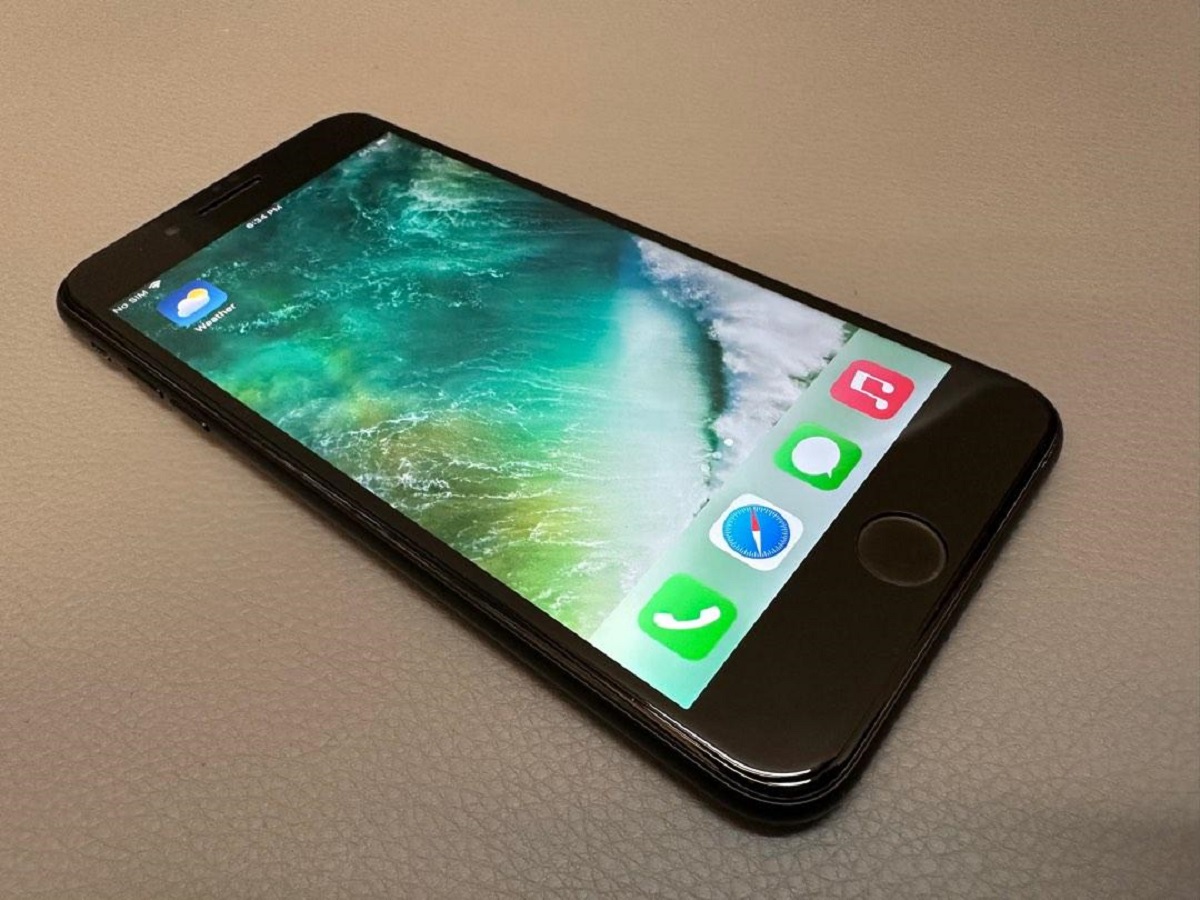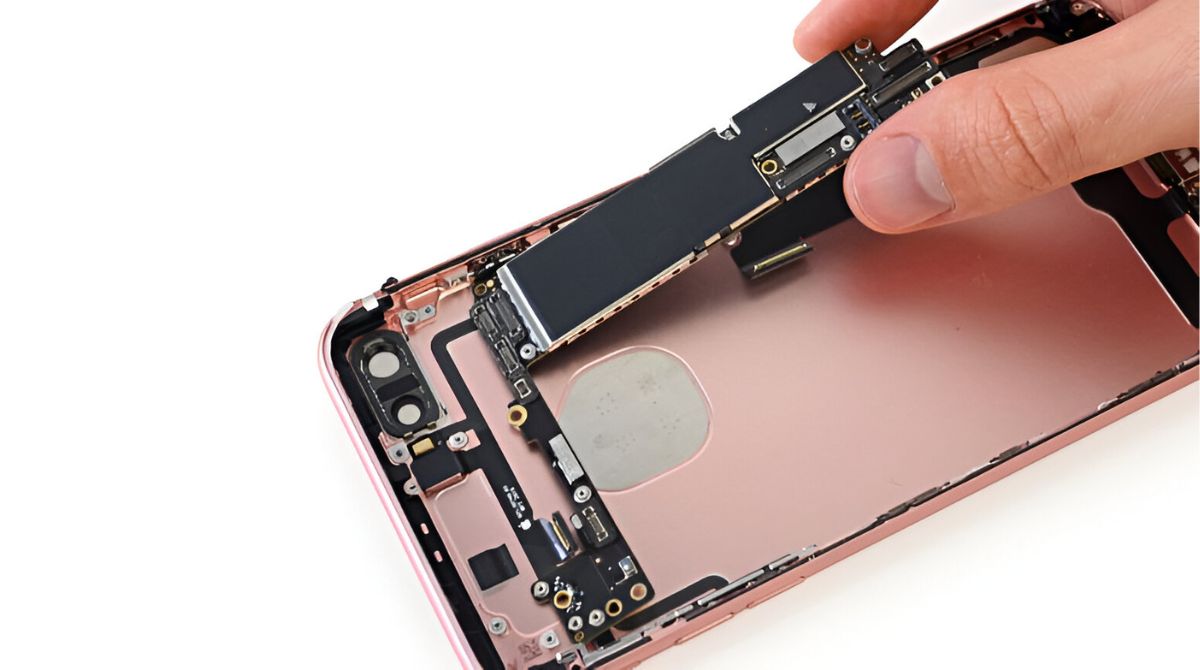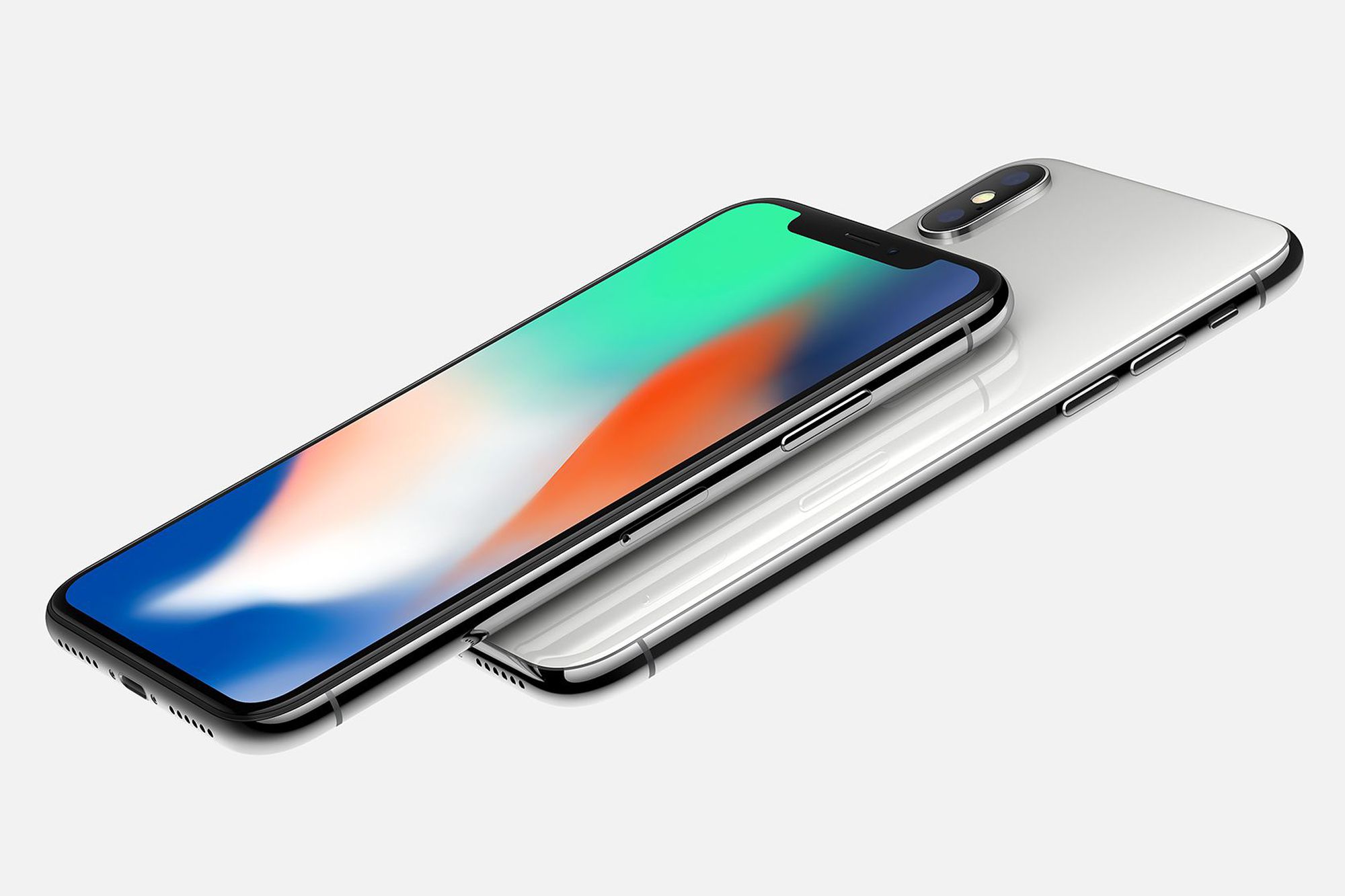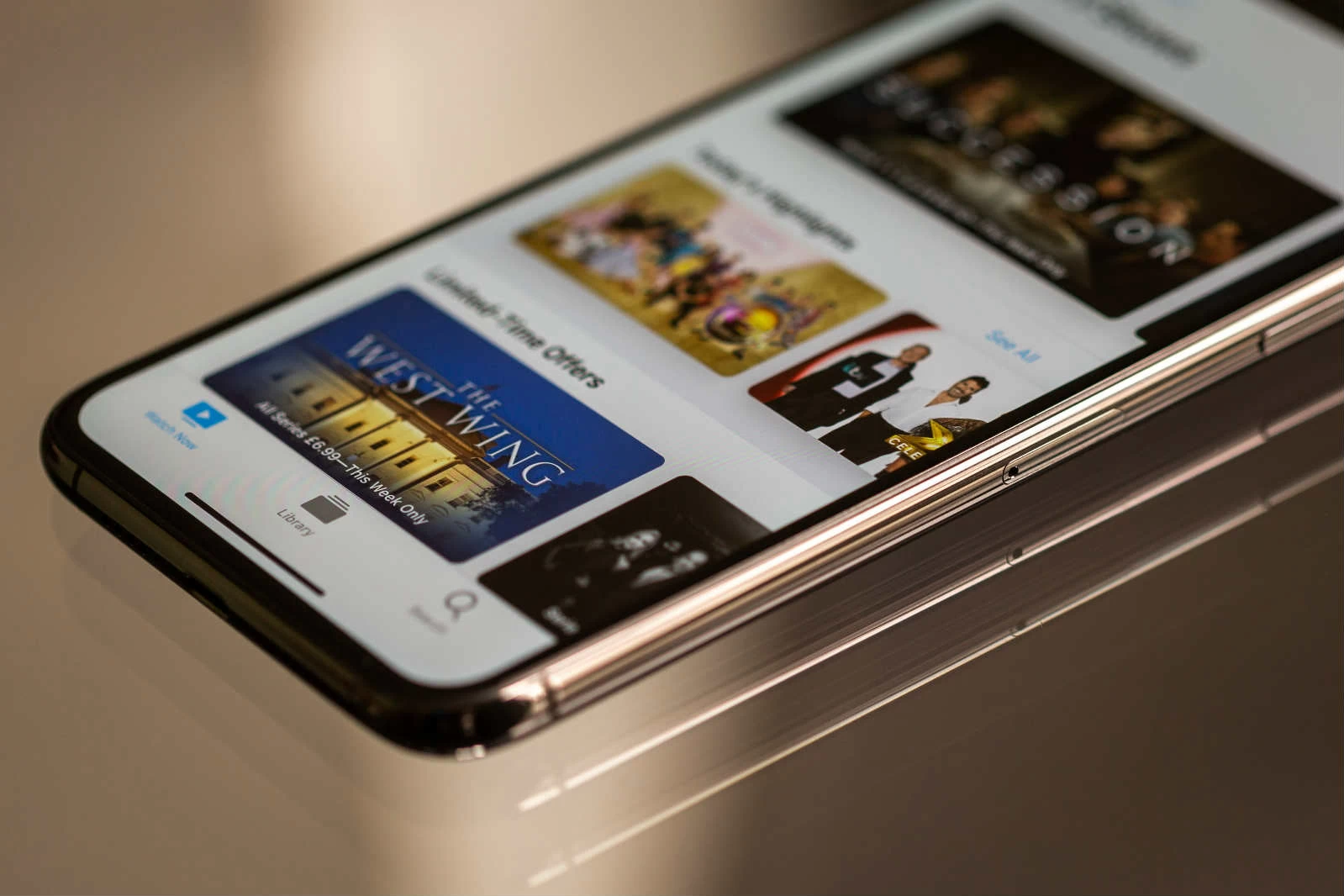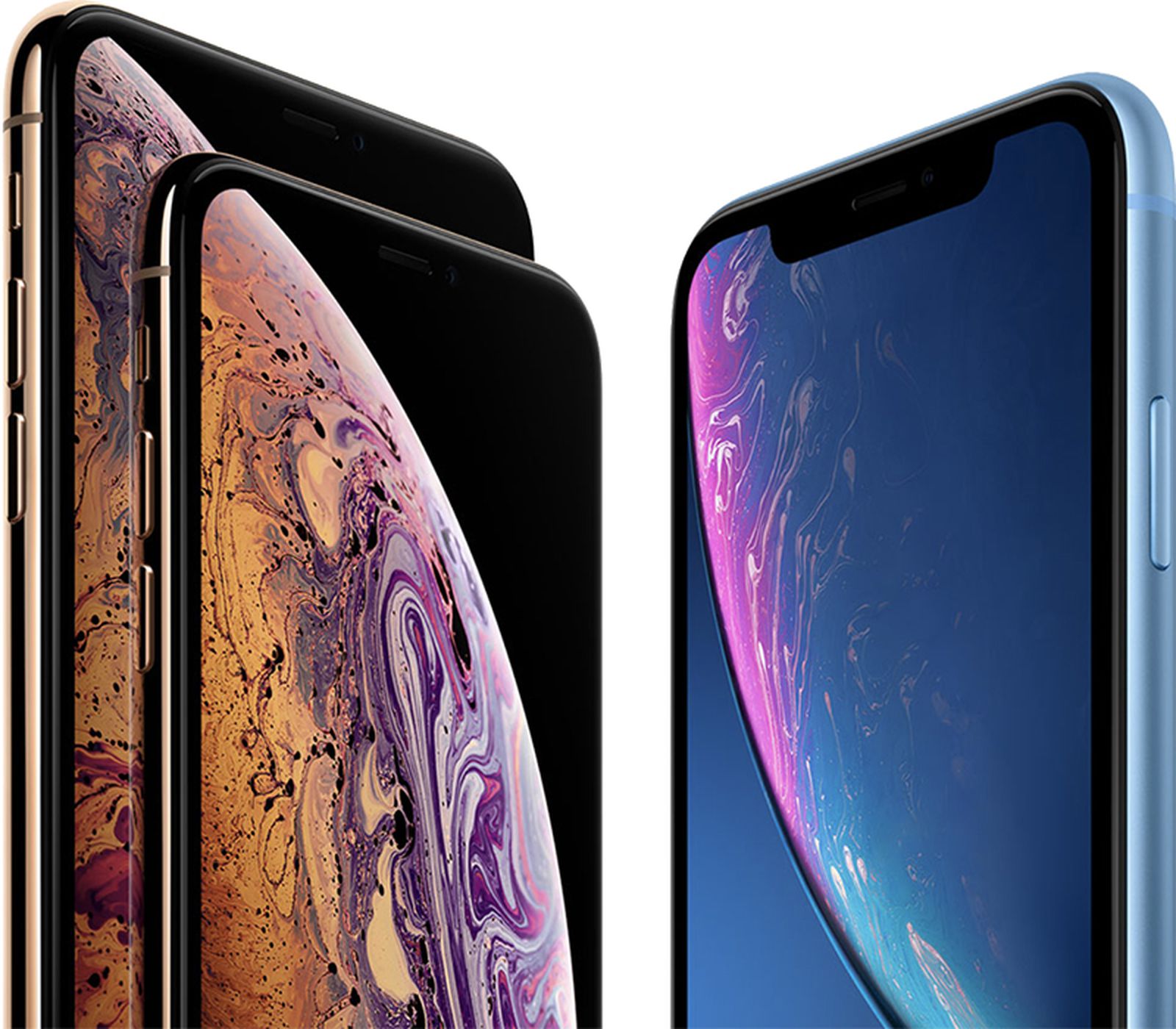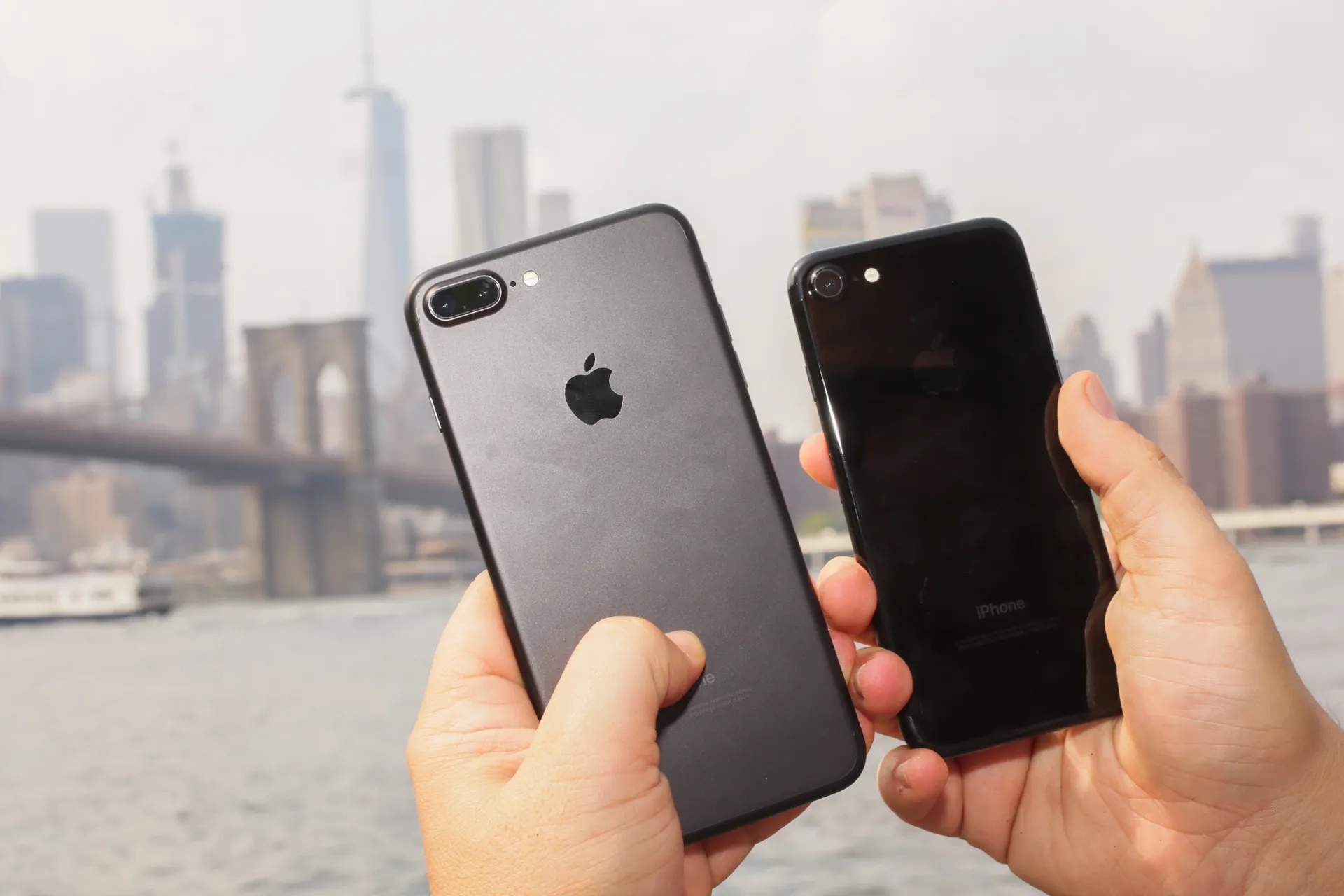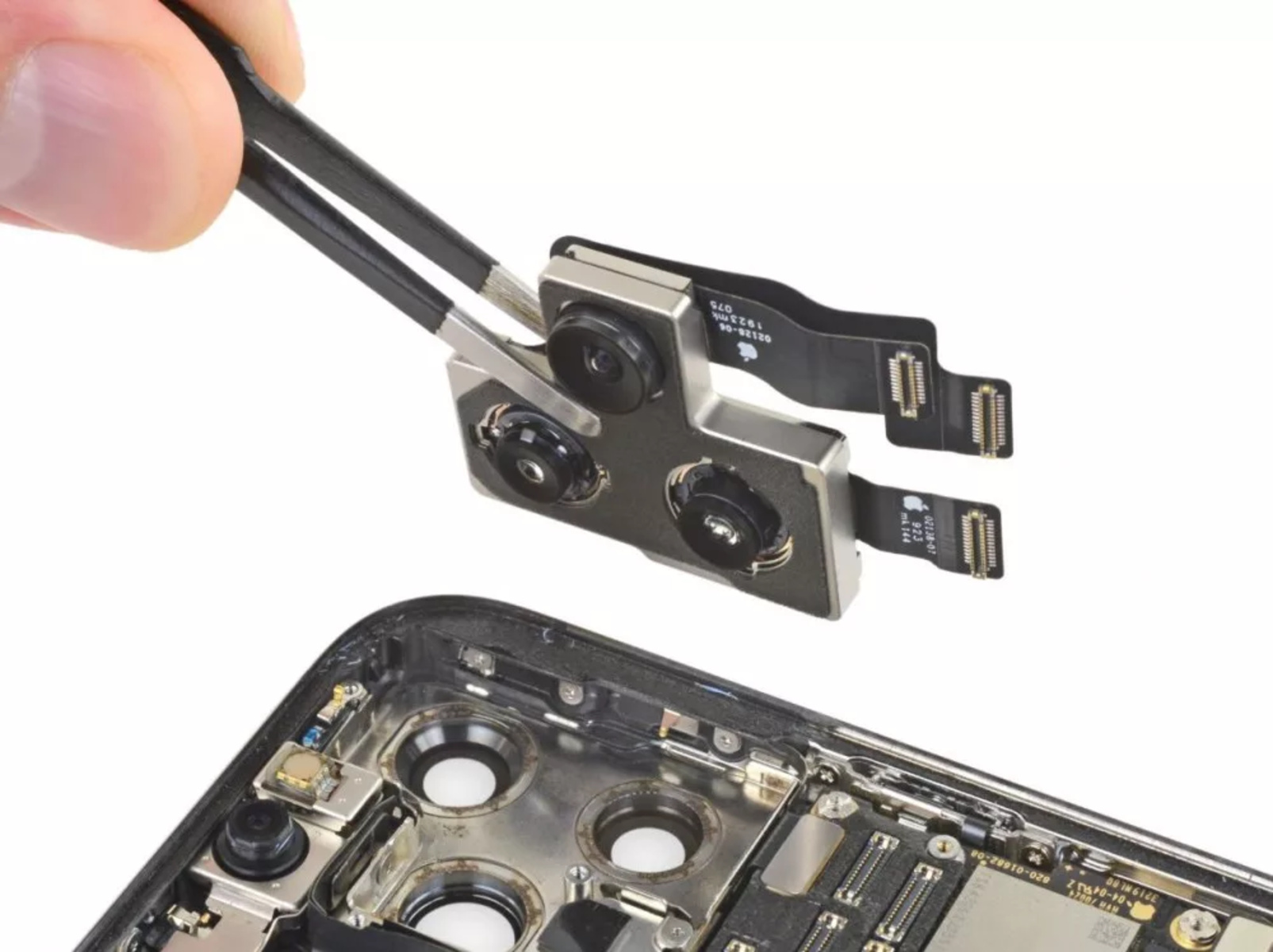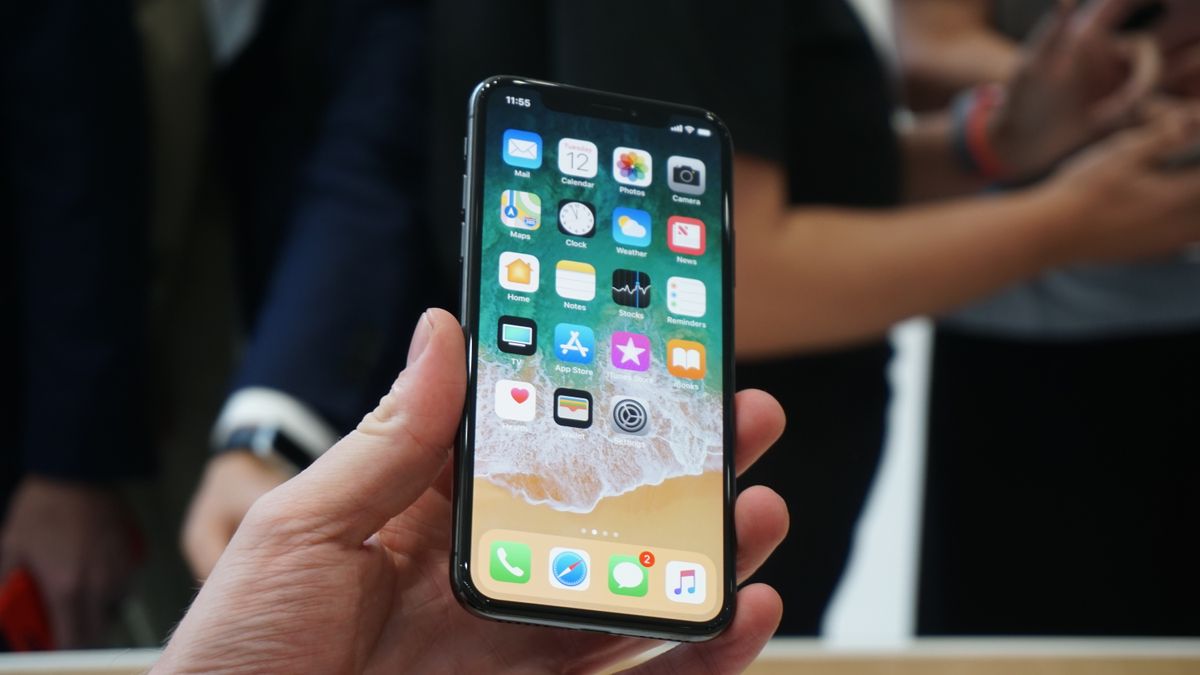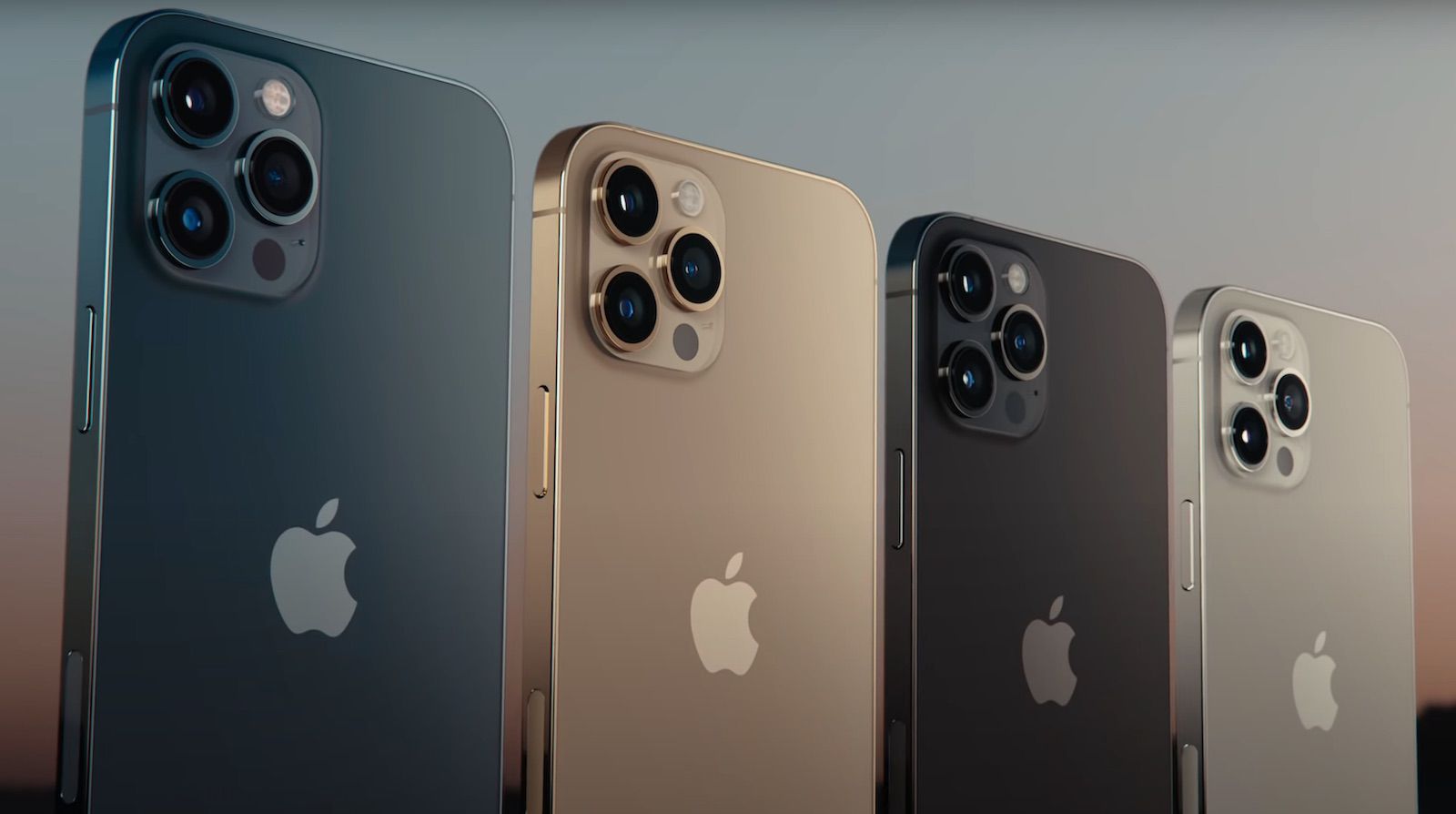Introduction
Welcome to our article on the RAM (Random Access Memory) capacity of the iPhone 7. When it comes to smartphones, RAM plays a vital role in determining its performance and capabilities. In this article, we will delve into the world of RAM and explore just how much of it is packed into the iPhone 7. But before we dive into the specifics, let’s first understand what RAM is and why it is important for smartphones.
RAM is a type of computer memory that is used to temporarily store data that is actively being accessed by the device. It provides fast and short-term storage that is crucial for running applications and carrying out various tasks on a smartphone. The more RAM a device has, the better it can handle multitasking, run resource-intensive apps smoothly, and switch between different apps seamlessly.
In the case of smartphones, RAM allows users to run multiple apps simultaneously, ensures smooth performance when switching between apps or browsing the web, and provides a buffer for processing and storing data. Without sufficient RAM, a smartphone may become sluggish, experience frequent app crashes, or struggle to handle demanding tasks.
Now, let’s turn our attention to the iPhone 7. Launched in 2016, this device was a significant upgrade from its predecessor, offering a range of new features and improvements. One important aspect that users often consider is the amount of RAM the device has, as it directly impacts their overall experience and the device’s capabilities.
What is RAM?
RAM, or Random Access Memory, is a type of computer memory that provides temporary storage and quick access to data that a device’s processor needs to perform tasks. Unlike a computer’s hard drive, which stores data even when the power is turned off, RAM loses its stored information when the device is powered down or restarted. This is why it is called “volatile” memory.
The primary function of RAM is to provide the necessary working space for a device’s operating system, applications, and data that are actively being used. When you open an app or perform a task on your smartphone, the relevant data and instructions are loaded into RAM for quick access by the device’s processor. Think of RAM as a workspace or a temporary staging area where data can be easily and rapidly accessed by the CPU (central processing unit).
RAM is characterized by its speed and capacity. The speed of RAM is measured in terms of its access time, which refers to the time it takes for the CPU to fetch data from or write data to the RAM module. The faster the access time, the faster the device can retrieve and process data, resulting in improved overall performance.
The capacity of RAM refers to the amount of data that can be stored in the module at any given time. Smartphones typically have varying RAM capacities, ranging from 2GB to 12GB or more, with higher-capacity RAM being able to handle more complex tasks and multitasking without experiencing slowdowns or crashes.
In summary, RAM is an essential component of any device, including smartphones. It allows for quick and efficient data access, ensuring smooth performance and the ability to handle multiple tasks simultaneously. The amount and speed of RAM are critical factors in determining a device’s overall performance and user experience.
Importance of RAM in smartphones
RAM plays a crucial role in determining the performance and functionality of smartphones. It directly impacts the device’s ability to run applications, handle multitasking, and provide a smooth user experience. Here are some key reasons why RAM is important in smartphones:
- Efficient multitasking: With the increasing number of apps and tasks we perform on our smartphones, having sufficient RAM is essential for efficient multitasking. RAM allows the device to keep multiple apps and processes running simultaneously without slowing down or experiencing crashes. It ensures that you can switch between apps seamlessly and smoothly.
- Smooth app performance: Resource-intensive apps, such as gaming or video editing apps, require a significant amount of RAM to run smoothly. Ample RAM ensures that these apps can access the required resources and perform at their best. Without enough RAM, these apps may lag, freeze, or crash, impacting the user experience.
- Faster data access: RAM provides faster data access compared to other storage options, such as the device’s internal storage or an external SD card. When an app or process requires data, it can be quickly retrieved from RAM, resulting in faster load times and improved responsiveness. This is particularly important for tasks like opening apps, browsing the web, or viewing media files.
- Optimized system performance: RAM works in conjunction with a device’s operating system to optimize overall performance. By storing frequently accessed data and instructions, RAM reduces the workload on the device’s processor, making operations more efficient. This leads to smoother navigation, faster app launches, and improved system responsiveness.
- Better gaming experience: Gaming on smartphones has become incredibly popular, with games becoming more advanced and graphics-intensive. To enjoy a seamless gaming experience, ample RAM is necessary. It allows games to load quickly, reduces lag, and ensures smooth gameplay without interruptions.
These are just a few of the reasons why RAM is vital in smartphones. It directly impacts the device’s speed, multitasking capabilities, app performance, and overall user experience. Having an appropriate amount of RAM ensures that your smartphone can handle the demands of modern apps and tasks, providing a smooth and enjoyable user experience.
How much RAM does iPhone 7 have?
The iPhone 7, released in 2016, comes with a specific amount of RAM that determines its capabilities and performance. Apple has always been known for its optimization and efficiency in utilizing hardware resources, including RAM. So, how much RAM does the iPhone 7 actually have?
The iPhone 7 is equipped with 2GB of RAM. While this may seem relatively low compared to some Android devices that offer higher RAM capacities, it is important to note that Apple’s iOS operating system is highly optimized and efficient in managing memory. Apple focuses on delivering a seamless user experience by balancing hardware and software optimization. As a result, the iPhone 7’s 2GB of RAM is sufficient to handle the demands of iOS and its native apps.
Even with 2GB of RAM, the iPhone 7 performs exceptionally well. It can handle everyday tasks, such as web browsing, social media, messaging, and even some resource-intensive applications, with ease. Apple’s tight integration of hardware and software ensures that the iPhone 7 delivers smooth performance and responsive multitasking despite the seemingly lower RAM capacity compared to other smartphones.
It’s worth noting that while the iPhone 7’s RAM may seem modest in terms of numbers, Apple’s optimization allows the device to efficiently manage memory usage, ensuring a seamless user experience. The iOS operating system intelligently prioritizes active and frequently used apps, dynamically allocating resources as needed.
Furthermore, Apple’s control over both the hardware and software ecosystem gives them the advantage of optimizing apps specifically for their devices. This optimization allows iOS apps to utilize available RAM efficiently, resulting in smoother performance and reduced memory footprint.
In summary, the iPhone 7 is equipped with 2GB of RAM, which may seem modest in comparison to some Android devices. However, Apple’s optimization and efficient resource management ensure that the iPhone 7 delivers excellent performance and multitasking capabilities. The iOS operating system, combined with hardware optimization, allows the device to handle everyday tasks seamlessly, proving that numbers don’t always translate directly to performance.
Comparison with other iPhone models
When it comes to RAM capacity, different iPhone models have varying specifications. Let’s take a closer look at how the iPhone 7’s RAM compares to other popular iPhone models.
Prior to the iPhone 7, the iPhone 6s and 6s Plus were released with 2GB of RAM, which is the same as the iPhone 7. This means that the iPhone 7 offers the same amount of RAM as its immediate predecessors. However, it’s important to note that each new iPhone model brings improvements in terms of overall performance, efficiency, and optimizations, which can make a significant difference in user experience.
With the launch of the iPhone 8, iPhone 8 Plus, and iPhone X, Apple introduced a RAM upgrade. These models came equipped with 3GB of RAM, providing a slight boost in multitasking capabilities and overall performance compared to the iPhone 7. The increased RAM capacity allowed these models to handle more resource-intensive tasks and run complex apps more smoothly.
Starting with the iPhone XS, XS Max, and XR, Apple further increased the RAM to 4GB. The additional RAM allowed for even better multitasking, improved app responsiveness, and enhanced performance, especially when running demanding apps or games.
It’s worth mentioning that while RAM is an important consideration in smartphone performance, Apple’s optimization and tight control over hardware and software allow their devices to achieve impressive performance with relatively lower RAM capacities compared to some Android devices. The seamless integration of hardware and software ensures efficient resource management, delivering a smooth user experience across iPhone models.
In summary, the iPhone 7 was released with 2GB of RAM, which was on par with its immediate predecessors, the iPhone 6s and 6s Plus. Subsequent iPhone models, such as the iPhone 8 series and the iPhone X series, saw incremental upgrades in RAM capacity, ranging from 3GB to 4GB. Apple’s focus on optimization and efficiency ensures that each iPhone model delivers excellent performance and multitasking capabilities, regardless of the specific RAM capacity.
Performance of iPhone 7 with its RAM
The iPhone 7, equipped with 2GB of RAM, may seem modest compared to some of its competitors with higher RAM capacities. However, Apple’s optimization and efficient resource management allow the iPhone 7 to deliver impressive performance that exceeds expectations.
Despite having less RAM, the iPhone 7 provides excellent multitasking capabilities and smooth performance. This can be attributed to Apple’s tight integration of hardware and software, which allows for efficient memory management and optimized app performance.
The iOS operating system, designed specifically for Apple devices, is known for its resource-efficient nature. It intelligently manages memory usage, prioritizing active apps and dynamically allocating resources as needed. This enables the iPhone 7 to handle everyday tasks, such as web browsing, social media, and messaging, seamlessly.
When it comes to launching apps, the iPhone 7 showcases its efficiency. Thanks to Apple’s optimization, apps load quickly and respond promptly, providing a smooth user experience. The combination of Apple’s powerful A10 Fusion chip and efficient resource management ensures that the device can handle resource-intensive tasks and run demanding apps without significant slowdowns or crashes.
The iPhone 7’s 2GB of RAM is especially notable for its ability to handle gaming. Even with the modest RAM capacity, gaming on the iPhone 7 is a delightful experience. The A10 Fusion chip, coupled with Apple’s optimization, ensures that games run smoothly and without any noticeable lag. The overall performance is impressive, allowing users to enjoy their favorite games with high frame rates and immersive graphics.
It’s important to mention that while some Android devices offer higher RAM capacities, the iPhone 7’s performance remains strong due to Apple’s hardware and software integration. This integration allows for efficient utilization of available resources, ensuring that the 2GB of RAM on the iPhone 7 is effectively optimized for smooth and responsive performance.
In summary, despite its seemingly lower RAM capacity, the iPhone 7 delivers impressive performance thanks to Apple’s optimization and efficient resource management. The device handles multitasking, launches apps quickly, and provides a delightful gaming experience. The combination of the A10 Fusion chip and the iOS operating system ensures that the iPhone 7 offers a smooth and responsive user experience, exceeding expectations for a device with 2GB of RAM.
Does iPhone 7’s RAM affect its battery life?
The RAM capacity of a smartphone can have implications on battery life, as more RAM requires more power to operate. However, when it comes to the iPhone 7, the impact of RAM on battery life is not as significant.
The iPhone 7 comes with 2GB of RAM, which is a relatively conservative amount compared to some Android devices with higher RAM capacities. Apple’s focus on optimization and efficiency plays a crucial role in minimizing the impact on battery life.
One of the key factors that contribute to the iPhone 7’s efficient battery usage is Apple’s vertically integrated approach, where hardware and software are tightly integrated. This allows for optimized power management that takes into account the RAM capacity when distributing power to different components of the device.
While RAM does consume some power, Apple’s efficient management of background processes and app refresh rates helps mitigate the impact. The iOS operating system intelligently manages background tasks and utilizes memory efficiently, thereby reducing the strain on the battery. This efficient management ensures that the iPhone 7 maintains good battery life without sacrificing performance.
It’s also important to note that the A10 Fusion chip, which powers the iPhone 7, is designed to be energy-efficient. The chip intelligently allocates power to various components, including RAM, based on the required processing power, effectively balancing performance and energy consumption.
Additionally, iOS provides users with various power-saving features and settings that can further optimize battery life. These features, such as Low Power Mode, background app refresh limit, push email settings, and more, can be adjusted to suit individual preferences and extend the iPhone 7’s battery life.
In summary, while RAM does consume some power, the iPhone 7’s 2GB RAM capacity does not have a significant negative impact on battery life. Apple’s optimization measures, efficient power management, and energy-efficient A10 Fusion chip work together to ensure a good balance between performance and battery usage. Users can enjoy smooth operation and decent battery life on the iPhone 7, even with its modest RAM capacity.
Closing thoughts
The RAM capacity of a smartphone, such as the iPhone 7, plays a crucial role in determining performance and multitasking capabilities. While the iPhone 7 may have a relatively conservative 2GB of RAM, Apple’s optimization and efficient resource management ensure that it delivers excellent performance and a seamless user experience.
The iPhone 7’s 2GB of RAM, combined with Apple’s vertically integrated approach and powerful A10 Fusion chip, allows the device to handle everyday tasks, run resource-intensive apps, and provide a smooth gaming experience. Apple’s control over hardware and software optimization minimizes the impact of lower RAM capacity and ensures efficient utilization of available resources.
It’s important to remember that RAM is just one component that contributes to a smartphone’s overall performance. Apple’s integration of hardware and software, along with their emphasis on efficiency and optimization, distinguishes the iPhone 7 from its competitors. The cohesive interplay of these elements allows the iPhone 7 to deliver impressive performance despite its seemingly modest RAM capacity.
Ultimately, the iPhone 7 provides users with a reliable and efficient device that offers excellent performance and multitasking capabilities. Whether you’re engaging in everyday tasks, running demanding applications, or enjoying mobile gaming, the iPhone 7’s combination of hardware and software optimization ensures a smooth and seamless user experience.
If you’re considering an iPhone 7, rest assured that its 2GB of RAM will not hold you back from enjoying the full potential of the device. Apple’s commitment to optimization and efficiency ensures that the iPhone 7 remains a reliable and capable choice for users seeking a device that balances performance, power efficiency, and usability.







